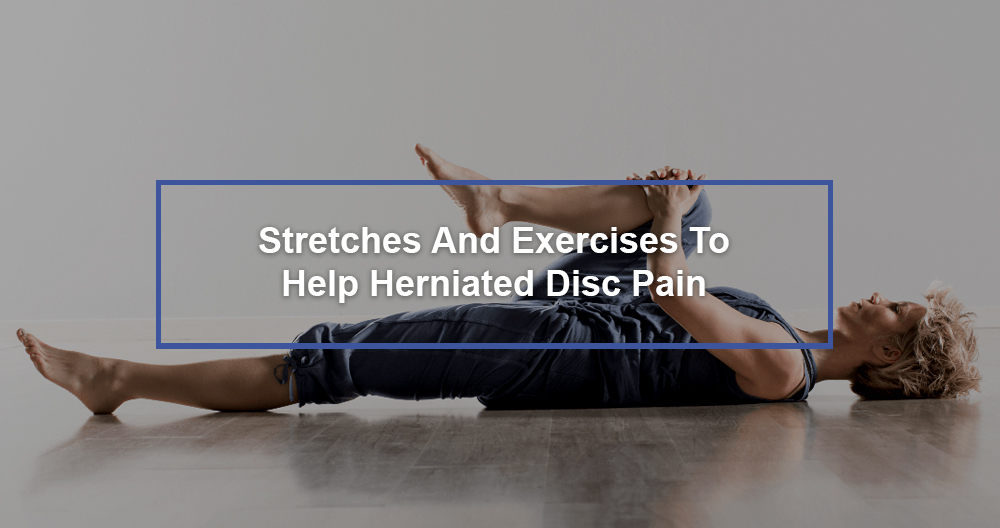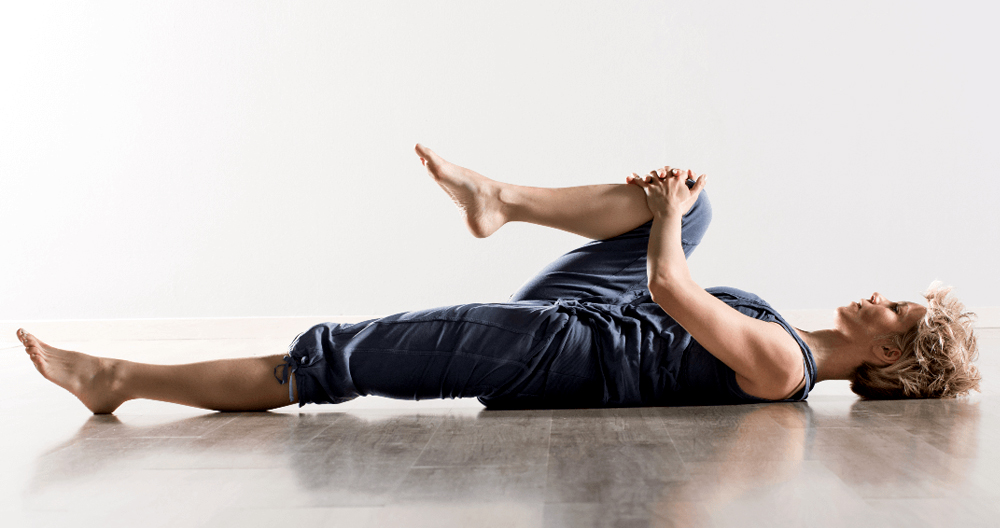
While herniated disks cannot be easily replaced, they are often treatable without surgery. These are the top stretches and exercises to relieve herniated disc symptoms. You can think of the cushioning discs between your vertebrae like your car’s brake pad. They actually have more to do with shock absorbers but we will still be there. You can either replace your brake pads if they’re worn down or have them replaced by a mechanic if not.
It is not easy to replace your back. Although disc replacement techniques are more sophisticated and less costly, the process is still surgery and you should avoid it as much as possible. In the event that your intervertebral Discs become damaged, herniated or ruptured, you should consider a different path. Exercise and stretching are good options.
Intervertebral Discs The Body’s Shock Absorbers
Your vertebrae, which are the small bones of your spine, have cushioning disks between them. You can think of the discs like small, soft balloons filled with a gel-like substance. There are 23 of these cushions. They are also called intervertebral disks. Intervertebral Discs are held in their place by cartilage at the end of each vertebra.
Intervertebral Discs are the spine’s shock absorbers. The intervertebral discs transfer stress and weight from vertebra to vertebra. These discs may become worn or injured over time, and their gel centers can leak and press on nerve roots. This is called a herniated or ruptured disc.
Stretches and Exercise to Reduce Herniated Disc pain
Before you begin any stretching or exercise, consult your physician if you are experiencing a herniated disc. If you do not receive proper instruction, you may be at risk of further injury. You should avoid stretching or doing any exercise during the acute stage.
Gentle exercises and stretching can be helpful in relieving the symptoms and pain caused by a herniated or bulging disc. The pressure on your spine can be relieved by strengthening your back, hamstring, and glute muscles. This helps to prevent future pain. Exercise promotes healing and prevents further injury.
- In order to heal the injury, blood flow to the spine will be increased.
- Stabilizing the support muscles that support the spine
- This reduces stress on the spine and relieves pain
- Correcting abnormal postures that are related to pain
Do not avoid exercise after receiving a diagnosis of a herniated disk. Your doctor will approve of you starting stretching and exercise immediately. To ensure safety, you should start with a small daily exercise program using the options below. Then, gradually build up to more difficult exercises as your body allows. The “BLTs” (bending and lifting) should be avoided.
While you don’t need to bring any special equipment, it can help make these stretches and exercises more enjoyable. Suggestions: A yoga mat (especially if you don’t have hard floors), a resistance band (a towel is sufficient), yoga blocks (not a recliner), yoga blocks, yoga blocks, yoga blocks, and a stable upright seat (not a recliner).
If any of these exercises cause pain, you should immediately stop and consult your doctor or treating physician.
Stretches and Exercises for the Cervical Spine
Exercise of isometric holding
- Relax your shoulders by squatting straight.
- Place your palm on your forehead.
- Your head should be pressed into your hand.
- Keep holding for between 5 and 15 seconds. Repeat this 15 times.
Neck extension and head lift exercises
- On a flat, raised surface, lie on your stomach.
- Place your arms between your legs.
- Do not hang your head from the edge.
- Gently lift your head slowly until it is in neutral. Hold this position for between 5 and 10 seconds.
- Repeat 15-20 times as needed.
Chin tuck/neck retraction exercise
- Place your back on a smooth surface.
- Place your arms sideways.
- Keep your chin up and towards your chest until you feel a pull.
- Keep it for between 5 and 10 seconds.
- Repeat this process 15-20 times.
Shoulder retraction (scapular retractions)
- You can either sit or, preferably, stand with your back against a wall.
- Your arms should naturally fall to your sides.
- Keep your elbows bent until your arms reach a 90 degree angle at your elbow. Your upper arms should not touch the wall.
- Retrace your shoulders and move your head back.
- Keep your upper arms pressed against the wall and your shoulders open by pressing your shoulder blades together.
- Keep it for between 15 and 30 seconds.
Neck rotation stretch– Gently rotate your head so that it is parallel to your shoulder. Continue to hold the pose for 30 seconds.
Lateral bend stretch – Tilt your head justify so you can touch your shoulder with one ear. Keep your head straight and tilt your right shoulder.
Scalene stretch – Sit in a comfortable chair and grab your justify hand. Next, extend your justify arm toward your right shoulder.
Stretches for the Lumbar Spine
Gentle knee-to-chest stretch
This is a great way to get started and it can also be used when your body doesn’t want to do more strenuous stretching. The knee-to chest stretch helps relieve pain by working muscles on either side of the back.
- Lay on your back, with your knees bent and both heels on the floor.
- To feel a tug, place your hands behind your knees and pull your hand towards your chest.
- You should hold the stretch for no less than 10 seconds. After that, you can switch to another position and continue it several more times.
Cat-cow stretch
The cat-cow stretching is a popular choice for back pain relief. This opens the spaces between the vertebrae to relieve pressure on the herniated disk and improves mobility.
- To ensure your body is flat and in a tabletop position, lower your hands to the ground.
- Breathe deeply, and then look up at the ceiling.
- You can then exhale slowly and round your spine into an arch like an angry cat. Then let your head hang free. You should be able to see your feet.
- Perform a set 10 times, two- to three times.
Back flexion stretch
Low back pain is one of the most common medical complaints. This stretch extends your spine and muscles.
- You can lie on your back
- Keep your knees bent and your arms in front of your chest.
- To ensure that your mid- and low back are tugged, lift your head off the ground.
- For 10 seconds, hold and then repeat 5-10 times.
Spinal decompression stretch
By stretching the space between your vertebrae, you can take pressure off your spines and discs.
- A stable place to hang from (e.g. You will need a bar for pull-ups, such as a top bar for door frames, monkey bars, or other bars. ).
- Grab the bar using an overhand grip. When your feet touch the ground, raise them up at the knees so they don’t touch.
- For 30 seconds, hang and then repeat three times.
Piriformis muscle stretch
This small muscle is located in the buttocks and can help relieve low back pain. This is also beneficial if you suffer from sciatica.
- Place your back on the ground or on a yoga mat.
- Now bend your knees and place your heels flat on the ground.
- You can rest your ankle on one leg while you lift the other. You should form an upside-down triangle.
- Reach one hand through the triangle to grasp the bent leg with both your hands.
- Keep your leg straightened until you feel a pull in your buttock from the crossed leg.
- Do the same for the other leg.
Stretch your hamstrings by sitting down
- Place one foot on the ground, the other on the chair. The knee should be bent at 90 degrees.
- Straighten your back, and then lean forward on the stretched leg until you feel a stretch at the back of the upper thigh.
- You can hold this stretch for about 15-30 seconds, then switch your legs.
- Repeat the process as many times as you are able.
- Option: If you wish, you could deepen this stretch by lying flat on your stomach and lifting one of your legs into the air. Use a long towel or resistance band to wrap around the heel. Pull your leg towards you by pulling the towel/band toward your body.
Prone extension stretch
This stretching helps to move the disc back to its correct position, which aids the healing process. It is possible that this stretch might not be comfortable for some people. This is normal. You should start slowly. If you feel pain, stop immediately.
- Place your face down on the ground or yoga mat.
- Place your forearms parallel to your body. Your elbows should bend at a 45 degree angle.
- Slowly raise your elbows to a “Sphinx” position. Keep your hips in contact with the floor.
- Push yourself up until your elbows are at 90 degrees.
- Tend the upward position for about 10-15 seconds and then return back to your starting place.
- Continue the stretch for 10 times, and then gradually increase the time that you hold the up position until it is stable for 30 seconds.
Abdominal bracing or pelvic tilt
- With your knees bent, place your feet flat on your back.
- You can contract the ab muscles by pulling in from the bottom and deep without having to hold your breath.
- As this happens, the lower back will drop to the floor and the spine will be in neutral.
- For 10-15 seconds, hold and repeat.
Thomas stretch
- Place your body on a smooth surface.
- Bring one leg straight up towards the chest.
- Keep the other leg elevated by pulling the abs in.
- The front of the thigh should be stretched.
- It is important to not feel any pressure or pain in the back.
Exercises to Avoid
A herniated disc can be caused or worsened by strenuous activities and sports. Herniated discs can also be caused by repetitive, strenuous activities and heavy lifting. If you are still recovering from a herniated spine, it is best to avoid strenuous activity until you have been cleared by your doctor.
Do not do any exercises that cause or intensify pain while you’re recovering.
- Avoid hamstring exercise if you have sciatica.
- They can cause injury to the spine so avoid running and certain other high-impact sports.
- Swimming and water exercises are a great choice because there is no impact, and gravity is eliminated while you’re in the water.

